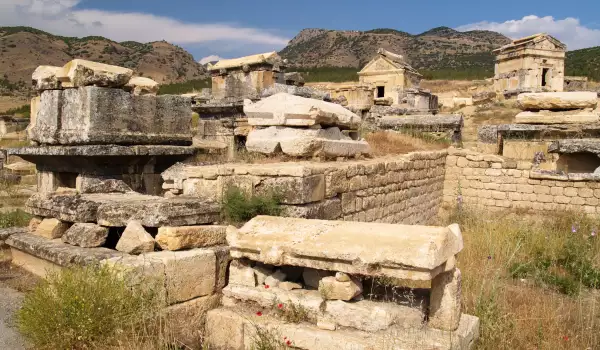Babylon is the oldest city in the world. It is away from Euphrates River and at that time was an important city of Draper. It is also becoming a center for commercial trade between the East and West, with traders transporting goods by land and sea.
Babylon was built in the late part of the third millennium by a man named Nimrod. At first it was called Babel, which means confusion. According to the Bible it was here that God confused the languages of the nations. In later centuries there was a lot of people doing something for the city.

According to world history in the year of 1790 BC. Hamurabi was in power in Babylon. The city enlarged, he fortifi1ed it and built the capital of an empire and a society based on the role of law. On top of the stone column the role of the law is entered and its legal code.
Later the town was occupied by different forces, the most significant are Chitin and Assyrians. Finally, around 645 BC. Chaldean Nabopolasar opens a new dynasty in Babylon. His son, Nebuchadnezar contributes to the perpetuation largest of the city. He held several project developments, including temples, palaces, firewalls, and his most famous project is the Gardens of Babylon.
According to the Greek Strabo, geographically it consisted of gardens and terraces studded with precious stones, located below were other large areas which held collections of trees. These gardens have become so famous that it turned into one of the seven wonders of the Ancient World.
The various projects done by Nebuchadnezar are something to be proud of, as recorded in the Biblical book of Dana. His achievements have been documented in numerous wedge-shaped inscriptions.
In his rise Babylon apparently looked really bulletproof to his enemies. Archaeologists state that the town was located on both sides of the Euphrates River, which means it had passed through the city providing enough water in case of siege. The river was used as a trench dug around the city which provides natural protection. Behind this ditch Babylonians built a double system of walls. Along the river sides had an equal number of bronze doors.

Finally, when the city seemed to be stable one night around 539 BC. It fell without any real struggle. The Persian conqueror was named Cyrus the Great. While people celebrated in the city, the army of the Persian altered the normal course of Euphrates River and having fallen to a sufficient level the army crossed over the coast and invaded through the open door, surprising the city.
It is interesting that 200 years ago this case, was predicted by the the biblical writer Isaiah. Cyrus the Great is even mentioned by name.
Will Babylon ever be restored?
During the 80's Saddam Hussein ordered the reopening of the city, but it never happened. Interesting again is that the biblical prophets Isaiah and Jeremiah examine the existence of the Babylon.
In the book "Research on archeology and the Old Testament" mentions:
"The massive ruins of which with the exception of the work of Kolduey, has had very little excavation in the last few centuries and has been subjected to tremendous looting for building materials. Partly as a consequence, much of the surface appears to be in such a chaotic order, which is very strongly reminiscent of Isaiah prophesying. Impression of devastation, coupled with scarce, are sealed in large areas of ruins. "
To this day, of this great and prosperous, they are only remnants and legends bearing from generation to generation.












